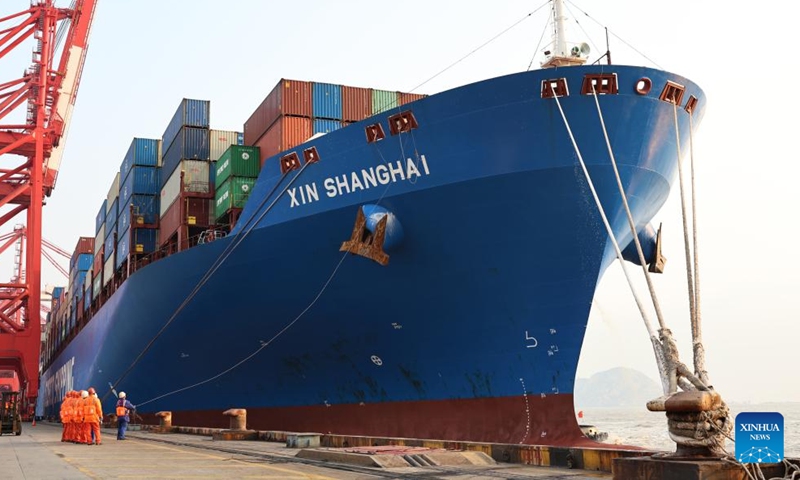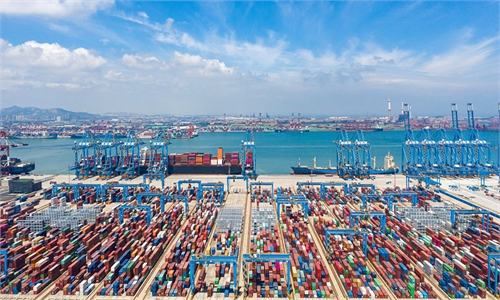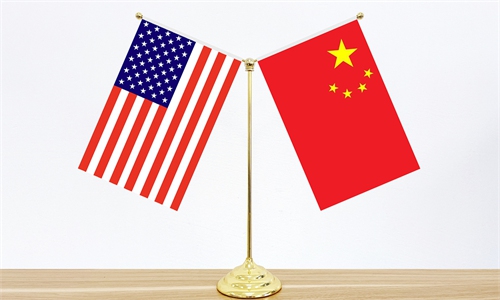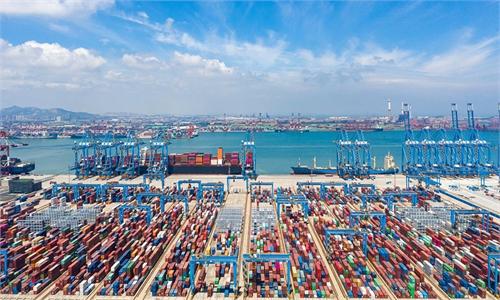
The "Xin Shanghai," a vessel operated by China COSCO Shipping Corporation Limited, is berthed at Yangshan Port, east China's Shanghai, Dec. 18, 2024. The "Xin Shanghai" arrived in Shanghai's Yangshan Port on Wednesday afternoon after a 23-day journey from Peru's Chancay Port, marking the first official voyage between the two ports. The journey opened the first two-way operational sea link between Shanghai and Chancay Port, a newly-inaugurated flagship project of Belt and Road cooperation between China and Peru. (Xinhua/Fang Zhe)
China has begun implementing import tariff cuts on Wednesday, as the world's second-largest economy continues to push forward to advance high-quality development and high-standard opening up in the new year.
As part of an annual tariff adjustment plan, provisional import tariffs - lower than the most-favored-nation rates - will be applied to 935 commodities including certain chemicals, pharmaceuticals, equipment and parts.
Also, according to the China-Maldives Free Trade Agreement (FTA) that took effective on Wednesday, the vast majority of the Maldives' aquatic exports to China will also enjoy zero tariffs.
The high-standard opening up by China, the major trading partner for over 150 countries and regions, will bring fresh opportunities to the rest of the world, especially developing countries, Tian Yun, an economist based in Beijing, told the Global Times on Wednesday.
High-quality development
The plan to impose lower tariffs on 935 commodities "will help increase the imports of quality products," according to a statement from the Customs Tariff Commission of the State Council on Saturday, noting that the tariff reduction aligns with the need to foster new quality productive forces through scientific and technological innovation, enhance people's well-being, and promote green and low-carbon development.
Under 24 free trade and preferential trade arrangements, conventional tariff rates will be applied to certain products from 34 countries or regions in 2025 as part of China's efforts to expand its globally oriented network of high-standard free trade areas, the commission said.
Previously, the number of free trade and preferential trade measures was 20, and the number of countries covered by these trade facilitation measures was 30.
In addition, China will continue to offer zero-tariff treatment on 100 percent of tariff lines in 2025 to the 43 least developed countries with which it has diplomatic relations in a bid to support their development and foster mutual benefits.
Tian Yun, an economist based in Beijing, told the Global Times on Wednesday the new move is in line with the deployment of the recent Central Economic Work Conference, which vowed to vigorously boost consumption and expand domestic demand on all fronts and further stressed efforts to promote high-standard opening up.
"In the new list, tariffs on many items relating to national security and people's livelihoods have been reduced, which will expand the demand for imports and in turn drive up domestic consumption," Tian said.
As the world's second-largest importing country, China's steady push to increase its imports will allow more countries in the Global South to share China's development dividend, Tian said, noting that China's stance and commitment to opening-up and free trade will garner more support from the global community amid a projected rise of anti-globalization and trade protectionism in 2025.
Growth dividend
Mohammad Jan Aminzai, president of Afghanistan-based Khwaja Mohammad Amin Co, told the Global Times on Wednesday that the Chinese government's slashing of import tariffs is a "very great idea" to Afghan traders in China as it allows traders to import more Afghanistan products to China and "this increase of imports in turn generates good working opportunities to Afghan people who get their income from their handicrafts."
"We expect 2025 to be the best year ever for our business and also hope it will be more prosperous to both countries," Aminzai said.
China's voluntary and unilateral opening-up will allow countries, especially least developed countries to fully develop their comparative economic advantages, improve their balance of payments in international trade and grow their economies, a Chinese analyst said.
Zhou Mi, a senior research fellow at the Chinese Academy of International Trade and Economic Cooperation, told the Global Times on Wednesday that the targeted, fine-tuning of imports tariff regime are an important grip by the Chinese central government to provide valid support to enterprises and enable them to better participate in the global market.
"For instance, the tariff reduction on industrial raw materials such as ethane will allow Chinese companies to better utilize cost-effective resources on the international market, thereby receiving a boost from supportive policies,'' Zhou said.
Zhou said the new free trade arrangement such as the new FTA with the Maldives, and the China-Singapore FTA Further Upgrade Protocol that came into effect on Tuesday, will inject more predictability into the market, noting that they're essential steps in building up a resilient market environment with enhanced expectations.
Institutional opening-up
A set of legal and policy measures, including the country's first energy law, a new regulation on data security, also took effect in China on Wednesday, as the country continues to push for institutional opening-up.
The import tariff cuts came after other moves in the country's ongoing opening-up efforts such as measures in extending visa-free transit stays to 240 hours with more entry points and the granting of license for medical services to China's first wholly foreign-owned, third-grade general hospital in December.
The Regional Comprehensive Economic Partnership (RCEP) celebrated its third anniversary of entry into force on Wednesday, with China playing an active part, Xinhua reported.
After years of push to voluntarily reduce import tariffs, China's average import tariffs have been dropped to around 7 percent, according to the Ministry of Commerce in 2023.
Huo Jianguo, vice chairman of the China Society for World Trade Organization Studies in Beijing, told the Global Times on Wednesday that after rounds of reductions in import tariff rates, China's average import duty rates could drop to the range of 6-7 percent in the future, demonstrating the country's resolve to open up wider, with higher standards, to the rest of the world.
The plan also raised import tariffs on a number of commodities based on the development trend of domestic industries and supply/demand dynamics. Commodities such as syrup and battery separators were among those that have seen a rise in tariff rates.



